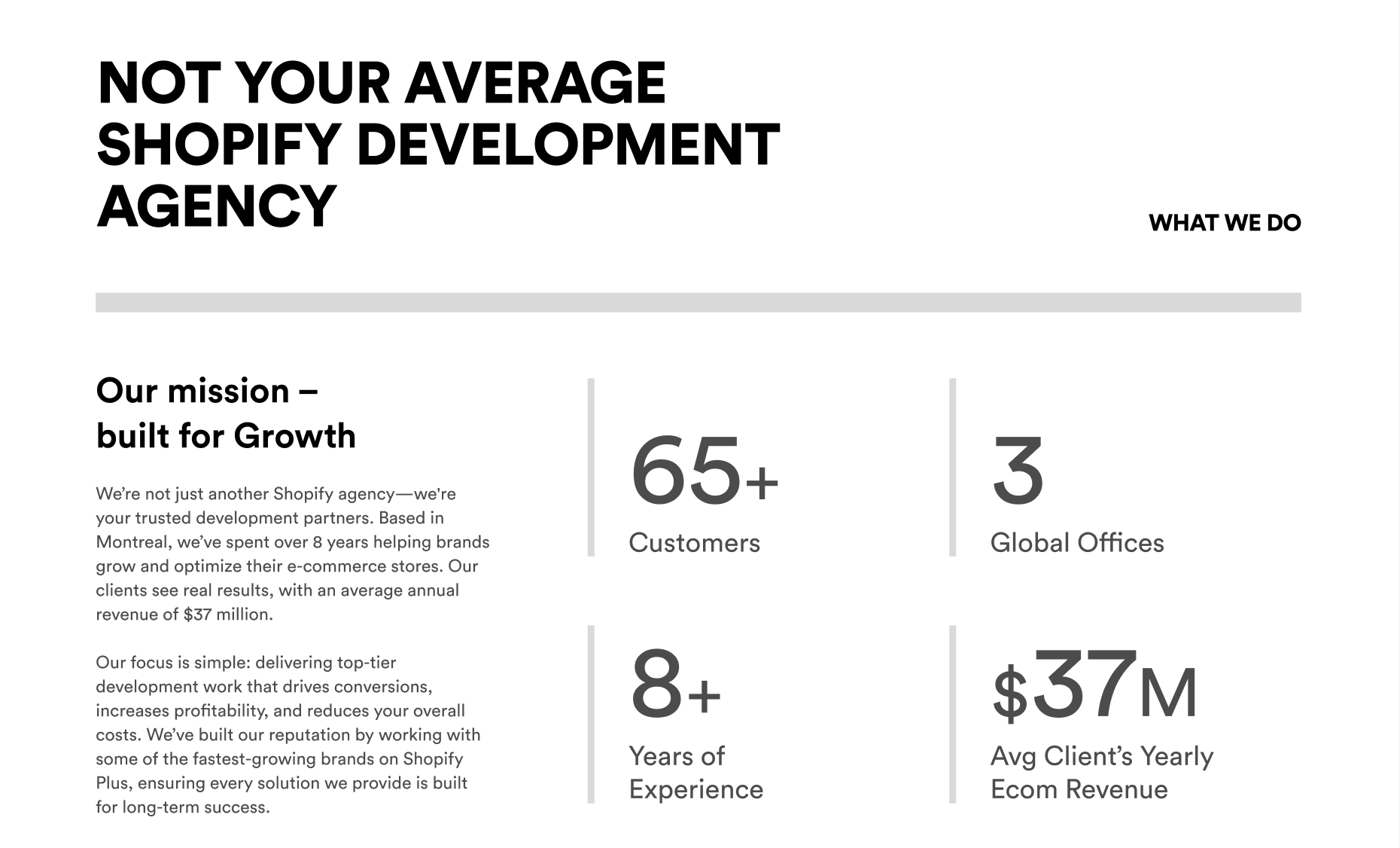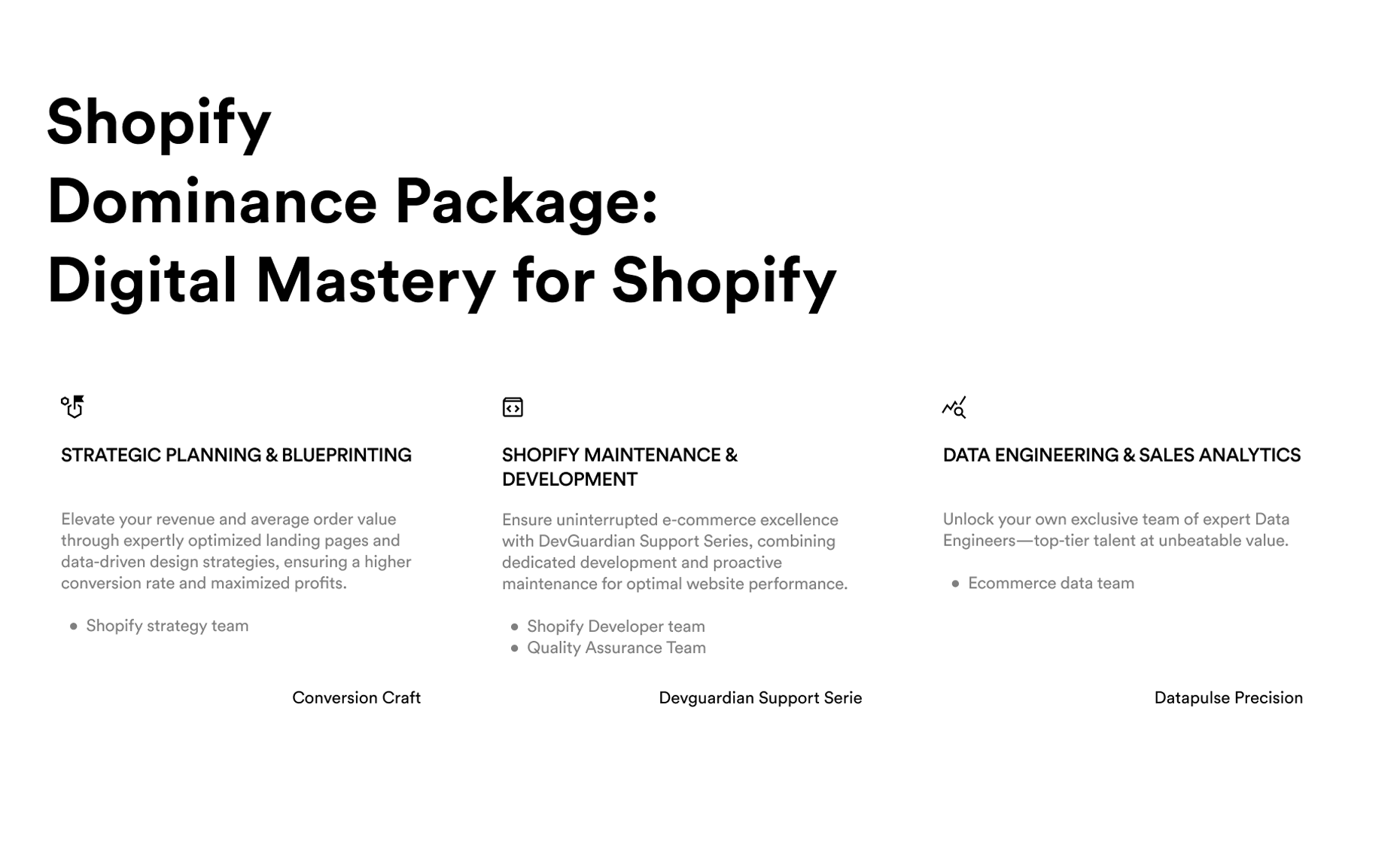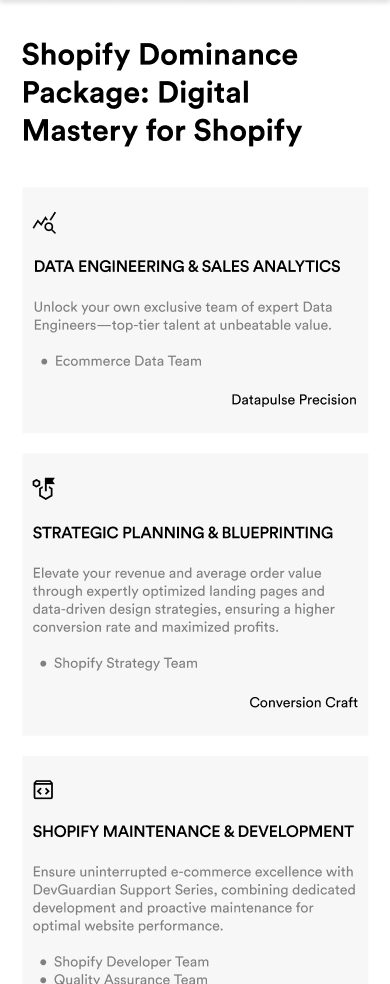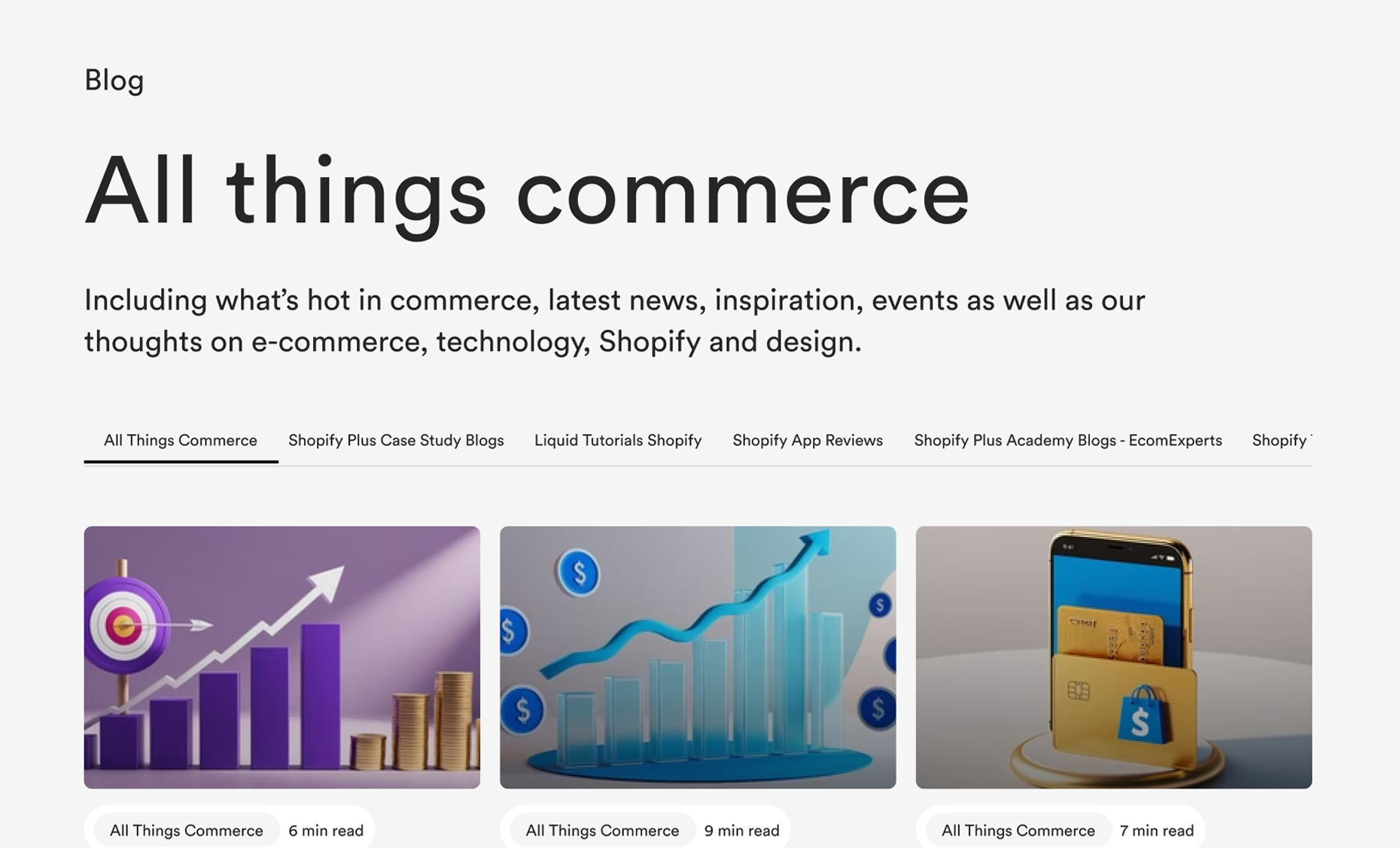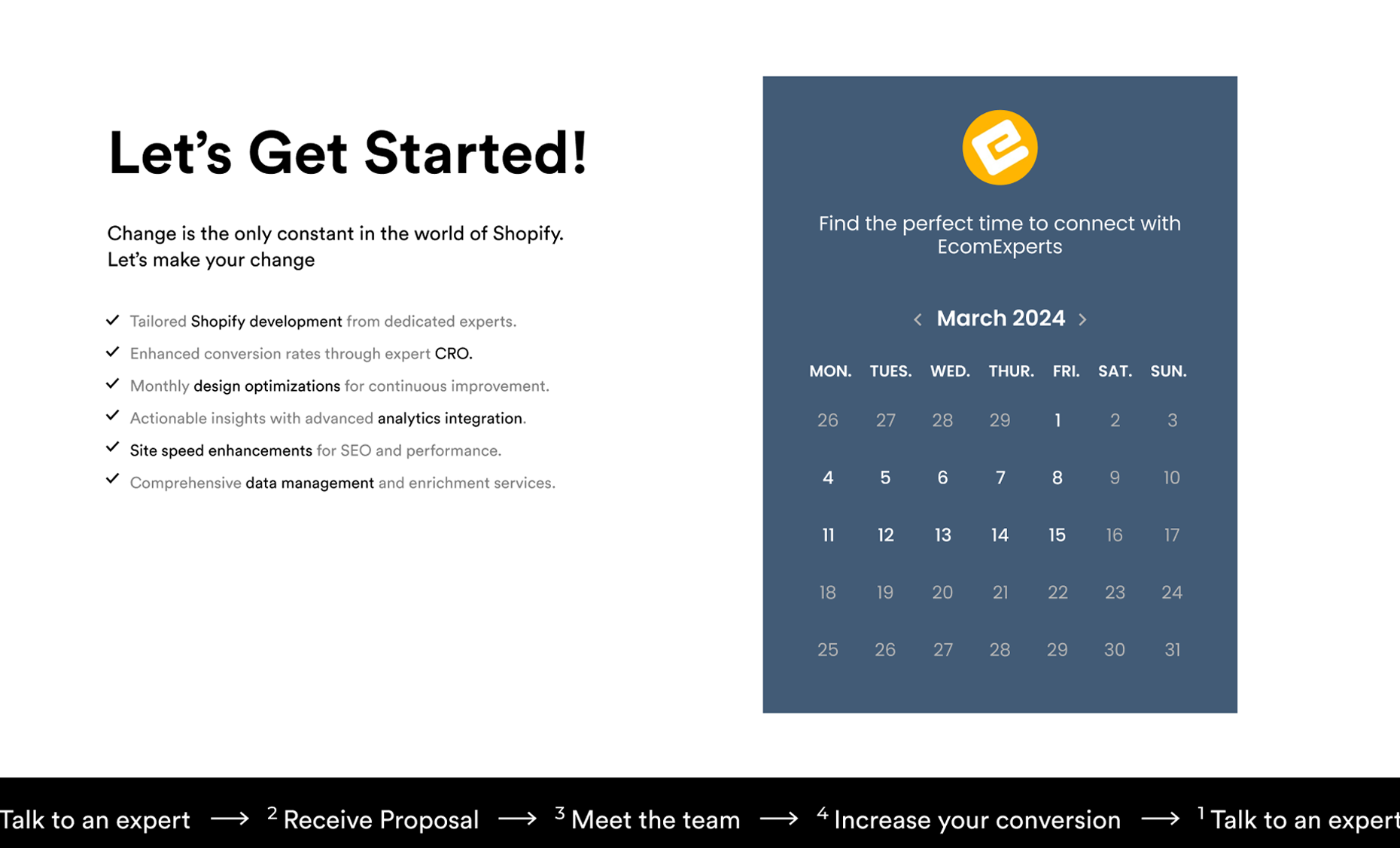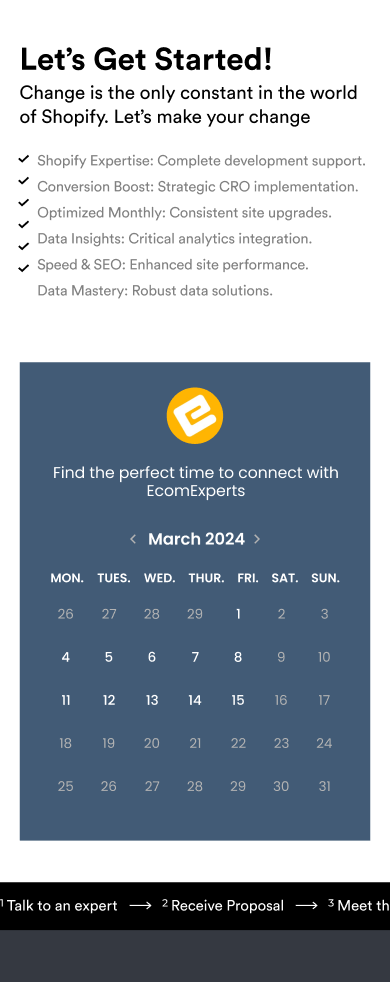What You'll Read In This Blog:
- What is E-commerce Conversion Rate?
- Why E-commerce Conversion Rates Matter
- Factors Influencing E-commerce Conversion Rate
- E-commerce Conversion Rate by Industry
- How to Calculate and Track E-commerce Conversion Rate
- Strategies to Increase E-commerce Conversion Rate
What is E-commerce Conversion Rate?
An e-commerce conversion rate is the percentage of website visitors who complete a specific action, such as making a purchase, signing up for a newsletter, or adding items to their shopping cart. This metric is one of the most important indicators of your store's performance because it directly correlates with revenue generation.
To calculate the e-commerce conversion rate, you can use the following formula:
Conversion Rate = ( Number of Conversions / Total Visitors ) × 100
For example, if your online store had 1,000 visitors and 30 of them made purchases, your conversion rate would be:
(30 / 1000) × 100 = 3%
In contrast, a high conversion rate signifies that your website successfully turns visitors into customers, which is essential for maintaining profitability and scaling your business.
According to Baymard Institute’s 2024 research, the average cart abandonment rate is 69.99%, which means nearly seven out of every ten potential sales are lost at the checkout stage. This highlights the importance of not only driving traffic but also optimizing the user journey to reduce friction points and maximize conversions.
Why E-commerce Conversion Rates Matter?
E-commerce conversion rate is one of the most crucial metrics that determines the success of your online store. Conversion rates measure the percentage of website visitors who complete a desired action, such as making a purchase. In 2024, as global e-commerce revenue is set to surpass $6.4 trillion, understanding how to optimize these rates is critical for staying competitive.
According to a 2024 Statista report, the average e-commerce conversion rate across all industries is currently 2.58%. While this may seem modest, even a small improvement can lead to substantial growth in revenue. For instance, a mere 1% increase in conversion rate could add thousands of dollars in sales, depending on the size of the business.
Mobile commerce is playing an increasingly important role, now accounting for 59.9% of total e-commerce revenue, according to IRP Commerce. However, mobile conversion rates remain lower than desktop rates due to factors such as user experience challenges and slower page load times on mobile devices .
In 2024, optimizing your conversion rates requires more than just driving traffic. It involves refining the customer journey, from page load speeds to product displays, checkout processes, and everything in between.
Factors Influencing E-commerce Conversion Rate
Several factors influence an e-commerce website's conversion rate, and understanding them is essential for improving performance. Conversion rates vary by industry, device, and user experience, and even small adjustments to any of these factors can have a significant impact on overall revenue.
1. Mobile vs. Desktop Traffic
Mobile traffic now dominates e-commerce, accounting for 59.9% of global e-commerce revenue, as reported by IRP Commerce in 2024. However, mobile conversion rates tend to lag behind desktop rates, with mobile visitors converting at an average of 2.25%, compared to 3.9% for desktop users. This discrepancy often stems from usability challenges on mobile devices, such as smaller screens, complex navigation, and slower load times.
2. Cart Abandonment
The Baymard Institute reported that the average cart abandonment rate in 2024 is 69.99%. This means that nearly seven out of every ten visitors who place an item in their cart end up leaving without completing their purchase. Common reasons for cart abandonment include unexpected shipping costs, complicated checkout processes, and a lack of trust signals like secure payment options.
3. Page Load Speed
Page load speed is directly tied to conversion rates. A study by Google in 2024 found that a one-second delay in mobile load times can decrease conversion rates by 20%. Faster-loading pages not only improve user experience but also positively impact SEO rankings, increasing organic traffic and potential conversions .
4. Trust and Security
Customers are becoming increasingly cautious about online transactions, particularly with the rise of digital fraud. According to McKinsey's 2024 report, e-commerce websites with trust signals, such as SSL certificates, clear return policies, and customer reviews, tend to have higher conversion rates. Trust and security are now non-negotiable for converting visitors into paying customers .
5. Personalization and User Experience
Personalized shopping experiences can significantly boost conversion rates. According to a 2024 report by Dynamic Yield, e-commerce businesses that utilize AI-driven personalization see an 8% increase in conversion rates. Tailoring product recommendations, promotions, and content to individual users can enhance engagement and encourage repeat purchases .
By addressing these factors, businesses can create a seamless shopping experience that encourages visitors to complete their purchases and become loyal customers.
E-commerce Conversion Rate by Industry: 2024 Trends
Understanding how conversion rates vary by industry is crucial for setting realistic benchmarks and identifying optimization opportunities. Conversion rates differ based on the nature of the products or services offered, customer intent, and even the typical transaction size. In 2024, industries such as Food & Beverage, Health & Beauty, and Fashion continue to lead with higher-than-average conversion rates.
Industry Benchmarks for 2024
According to data compiled by IRP Commerce and Statista in 2024, the average e-commerce conversion rate across industries is around 2.58%. However, specific industries outperform this average:
- Food & Beverage: This industry maintains a high conversion rate of around 5.96%, primarily due to the high frequency of repeat purchases and the low-friction nature of product selection.
- Health & Beauty: With an industry average of 4.54%, the personalized nature of beauty products and customer loyalty programs drive higher conversion rates.
- Fashion & Apparel: Fashion sites typically see a conversion rate of 3.27%. While this is above average, fashion e-commerce faces unique challenges such as size variability and product returns, which can impact overall conversions.
- Luxury Goods: In contrast, luxury brands experience a much lower average conversion rate of 1.24%. The lower frequency of purchases and the high consideration time for these expensive products contribute to this lower rate.
What These Numbers Mean for Your Business
By comparing your store’s conversion rate to these industry-specific benchmarks, you can better gauge where you stand. If your conversion rate is below the average for your industry, it may signal a need to review your site’s user experience, checkout process, or product offering.
Conversely, if your conversion rate is higher than average, you might focus on scaling traffic acquisition efforts, knowing that your website converts well.
Tracking how your conversion rate compares within your industry can also help you set realistic goals. For example, if you run an online store in the Health & Beauty sector and your conversion rate is currently 3%, you might aim for a 4% conversion rate as a reasonable next step.
How to Calculate and Track E-commerce Conversion Rate
Accurately calculating and tracking your e-commerce conversion rate helps you understand how effectively your website is turning visitors into customers. By consistently monitoring your conversion rate, you can identify areas for improvement and ensure that your store is meeting industry benchmarks.
Types of Conversions
- Macro Conversions: These are major actions like making a purchase or completing a registration.
- Micro Conversions: Smaller actions that lead toward macro conversions, like adding a product to the cart or viewing a product page.
Top Conversion Rate Calculator Tools
To simplify the calculation process, you can use conversion rate calculators that automate the math and provide deeper insights into your business performance. Here are some of the top tools:
- Shopify Conversion Rate Calculator: A simple tool that allows you to quickly calculate your conversion rate by entering visitor and sales numbers.
- HubSpot Conversion Rate Calculator: Provides a quick and easy way to measure the effectiveness of your campaigns and e-commerce store.
- Omniconvert Conversion Rate Calculator: A robust tool designed to help you evaluate various types of conversions, from purchases to form completions.
Tracking Tools for E-commerce Conversion Rate
Here are some tools to help you track and analyze your conversion rates in real-time:
- Google Analytics: Offers comprehensive data on conversion rates across different user segments, devices, and traffic sources.
- Shopify Analytics: Provides insights specifically tailored for Shopify store owners, such as conversion rates, cart abandonment, and average order value.
- Hotjar: Helps identify drop-off points in the conversion funnel through heatmaps and session recordings.
Segmenting Conversion Rates for Deeper Insights
Segmenting your conversion rates provides a clearer picture of how different groups of users interact with your site. You can segment by:
- Device Type: Compare conversion rates on mobile vs. desktop to determine where users engage best.
- Traffic Source: Assess which channels (e.g., paid ads, organic search) lead to the highest conversion rates.
- Customer Type: Look at how first-time visitors convert vs. returning customers, as the latter often have a higher conversion rate.
Proven Strategies to Increase E-commerce Conversion Rate
Now that we’ve covered how to calculate and track conversion rates, let’s dive into actionable strategies that can help you increase e-commerce conversion rate. Optimizing your website and user experience based on data can significantly improve conversions, leading to more sales and revenue.
1. Optimize Website Speed
Website speed is a crucial factor in e-commerce conversion rate. A slow-loading website frustrates users and leads to higher bounce rates. According to Google’s 2024 data, even a one-second delay in mobile load times can reduce conversions by 20%.
To address this, consider optimizing your website’s speed by:
- Compressing images: Large, unoptimized images can significantly slow down your site.
- Minimizing CSS and JavaScript: By cleaning up unnecessary code, you can improve load times.
- Using a CDN (Content Delivery Network): A CDN helps by delivering your site’s content from the nearest server, improving speed for visitors around the world.
For more in-depth information on optimizing your Shopify store’s speed, check out our blog post: How Do I Fix My Shopify Store's Speed?.
2. Simplify the Checkout Process
A complicated checkout process is one of the biggest reasons for cart abandonment, with 69.99% of shopping carts abandoned before completion in 2024 according to the Baymard Institute. A seamless, easy-to-navigate checkout process can make the difference between a sale and a lost customer.
Strategies to simplify checkout include:
- Offering guest checkout: Not all customers want to create an account, and requiring one could increase abandonment rates.
- Reducing the number of form fields: Ask only for essential information. Overcomplicated forms can frustrate users.
- Providing multiple payment options: Ensure users can pay in their preferred way (credit cards, PayPal, etc.).
For detailed advice, read our blog on How to Optimize the Checkout Process of Your Shopify Store.
3. Use Trust Signals
Trust is a significant factor in whether a customer decides to purchase from your online store. According to a 2024 McKinsey report, websites that display clear trust signals, such as security badges and customer reviews, see an average 15% increase in conversion rates.
You can build trust by:
- Displaying trust badges: Security badges like SSL certificates give customers confidence that their data is secure.
- Including customer reviews: Positive reviews can significantly influence purchasing decisions.
- Having clear return policies: Displaying a clear, customer-friendly return policy reassures users that their purchase is risk-free.
To learn more about implementing trust signals effectively, check out our blog on Free Trust Badges.
4. Leverage Personalization
Personalizing the shopping experience can have a significant impact on conversions. According to Dynamic Yield’s 2024 report, businesses that offer personalized shopping experiences see an 8% increase in conversion rates.
Ways to implement personalization include:
- Product recommendations: Display recommended products based on the user’s browsing behavior or past purchases.
- Targeted offers: Send personalized email campaigns with discounts tailored to individual customers.
- Customizable content: Use dynamic content that changes based on the user’s demographics or preferences.
Personalization helps you engage visitors by showing them relevant products and offers, increasing the likelihood of conversion.
5. Optimize for Mobile Users
Mobile traffic accounts for nearly 60% of global e-commerce sales in 2024, but mobile devices tend to have lower conversion rates than desktop due to factors like slow load times and poor usability. Ensuring your site is mobile-friendly is essential.
Steps to improve mobile optimization include:
- Responsive design: Ensure your site is fully responsive, adjusting seamlessly across all screen sizes.
- Simplified navigation: Mobile users prefer simpler, more intuitive menus and interfaces.
- Fast loading times: Mobile users are more likely to abandon a page if it takes more than three seconds to load.
Prioritize mobile optimization to capture this growing audience and improve your overall conversion rate.
6. Implement A/B Testing
A/B testing, or split testing, involves testing two or more variations of a webpage element (like headlines, images, or calls to action) to determine which performs better. According to Optimizely, companies that continuously run A/B tests see an average 13% increase in conversions over time.
Some key elements to test include:
- Call-to-action (CTA) buttons: Experiment with different wording, colors, and placements to see which drives more clicks.
- Product images: Test different image styles, sizes, and placements to see which leads to higher engagement.
- Checkout process steps: Try different layouts or sequences to simplify the user experience.
Tools like Google Optimize and Optimizely can help you easily set up and analyze A/B tests to maximize your conversion rate.
By implementing these proven strategies, you can significantly improve your e-commerce conversion rates and create a seamless shopping experience for your customers.
Conclusion
E-commerce conversion rates are a critical metric that reflects how well your online store is performing. By understanding how to calculate, track, and improve your conversion rates, you can significantly boost your store’s revenue. Factors such as website speed, checkout simplicity, trust signals, and mobile optimization play a crucial role in improving conversions. Additionally, keeping track of industry-specific benchmarks will help you set realistic goals and stay competitive.
The strategies outlined in this blog—ranging from simplifying your checkout process to implementing personalized shopping experiences—are proven ways to boost conversion rates. Consistent A/B testing and the use of advanced analytics tools will ensure that your store evolves with changing consumer behavior and continues to perform at its best.
Ecom Experts is dedicated to helping Shopify stores optimize their performance, ensuring a seamless user experience and improved conversion rates. By partnering with us, you can implement the right tools and strategies to grow your business and stay ahead of the competition.
FAQs
Q1. What is a good conversion rate for e-commerce?
A1. A good conversion rate typically ranges from 2.5% to 3% across most industries, though some sectors like Food & Beverage can see rates as high as 5.96%. The exact rate depends on your industry and the quality of your site’s user experience.
Q2. How do you calculate e-commerce conversion rates?
A2. The conversion rate is calculated using the formula: (Number of Conversions / Total Visitors) x 100. For example, if your store had 5,000 visitors and 150 purchases, your conversion rate would be 3%.
Q3. What factors influence e-commerce conversion rates?
A3. Factors such as website speed, mobile optimization, checkout process, and trust signals all significantly affect conversion rates. Improving these areas can lead to more sales and better user retention.
Q4. How can I increase my e-commerce conversion rate?
A4. You can increase your conversion rate by optimizing page load speeds, simplifying your checkout process, offering personalized experiences, and using A/B testing to identify what works best for your audience.
Q5. What are micro and macro conversions?
Q5. Macro conversions are major actions like purchases, while micro conversions are smaller actions that indicate user engagement, such as adding an item to the cart or signing up for a newsletter.




